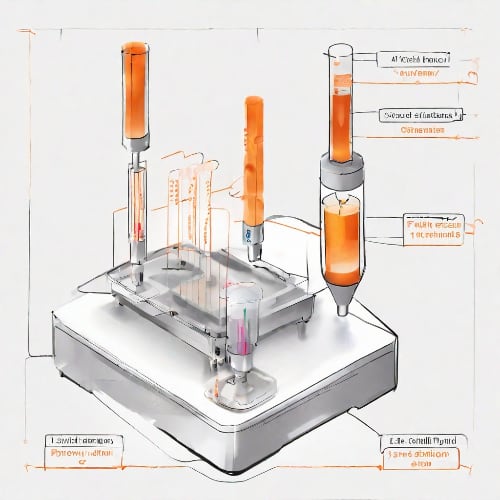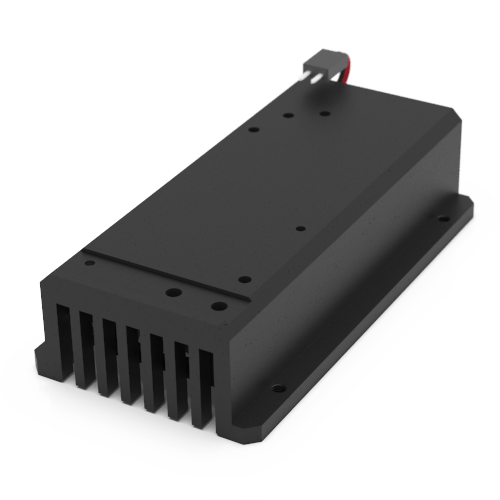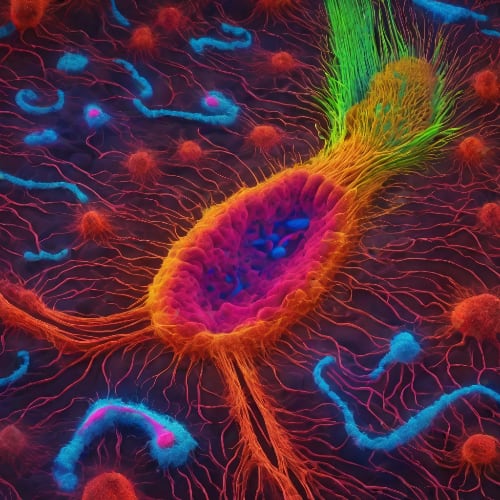Multi-Wavelength Laser
Item Code: 40A-48A-52A-64A-14-PT-NFDescription
- Four wavelengths
- Plug-and-play
- Single user interface for all 4 wavelengths
- Space-saving design
- No optics realignment
- Remote PC control
Fiber Termination - FC/PC (PT): FC/PC has good insertion repeatability, therefore is often used in single-mode fiber applications. Features a key for polarization-maintaining fiber installations.
Laser Rental
Rent a high-performance laser for a time-limited experiment. Or try several laser options before deciding, which to choose.
Success
Your request has been sent successfully. We'll get back to you as soon as possible.
Back to homepageRequest
Begin your product purchase process, with flexibility for customization based on your needs.
Success
Your request has been sent successfully. We'll get back to you as soon as possible.
Back to homepage| Parameter | Minimum Value | Typical Value | Maximum Value |
|---|---|---|---|
| Output power, mW 1 | - | 405 nm - 100 488 nm - 40 520 nm - 70 638 nm - 100 |
- |
| Wavelength tolerance, nm | 400 480 515 635 |
405 488 520 638 |
410 495 530 641 |
| Longitudinal modes | - | Multiple | - |
| Spectral line width FWHM, nm | - | 1 | 2 |
| Fiber core diameter, μm 2 | 50 | 105 | 200 |
| Power stability, % (RMS, 8 hrs) 3 | - | 0.2 | 1 |
| Power stability, % (peak-to-peak, 8 hrs) 4 | - | 2 | 5 |
| Intensity noise, % (RMS, 20 Hz to 20 MHz) 5 | - | 0.5 | 1 |
| Transversal modes | - | multimode (top-hat-like) | - |
| Control interface type 6 | - | UART | - |
| Operation mode | - | ACC (CW) | - |
| Modulation bandwidth, MHz 7 | - | 10 | - |
| Input voltage, VDC | 8 | 9 | 12 |
| External power supply requirement 8 | - | +9 V DC, 1.5 A | +12 V DC, 1.5 A |
| Dimensions (WxDxH), mm 9 | - | 50 x 30 x 18 | - |
| Heat-sinking requirement, °C/W | - | <0.5 | - |
| Optimum heatsink temperature, °C | - | 25 | - |
| Warm up time, mins (cold start) | 0.1 | 0.5 | 1 |
| Temperature stabilization | - | Internal TEC | - |
| Overheat protection | - | Yes | - |
| Storage temperature, °C (non-condensing) | -10 | - | 50 |
| Net weight, kg | - | 0.2 | - |
| Power consumption, W 10 | - | 2 | 18 |
| Warranty, months (op. hrs) 11 | - | 14 (10000) | - |
| RoHS | - | Yes | - |
| CE compliance | - | - General Product Safety Directive (GPSD) 2001/95/EC - (EMC) Directive 2004/108/EC | - |
| OEM lasers are not compliant with | - | IEC60825-1:2014 (compliant using additional accessories) | - |
1 The optical power can be tuned from virtually 0% to 100% by changing the driving current of the laser diodes. However, other specifications, such as central wavelength, power stability, noise, polarization ratio, beam shape, quality, and circularity are not guaranteed at power levels other than factory preset power. Significantly worse power stability is to be expected at very low power levels, e.g. <3% from specified nominal power.
2 Customer's choice.
3 The long term power test is carried out at constant laser body temperature (+/-0.1 °C) using an optical power meter with an input bandwidth of 10 Hz. The actual measurement rate has a period of about 20 seconds to 1 minute.
4 The long term power test is carried out at constant laser body temperature (+/-0.1 °C) using an optical power meter with an input bandwidth of 10 Hz. The actual measurement rate has a period of about 20 seconds to 1 minute.
5 Noise level is measured with a fast photodiode connected to an oscilloscope. The overall system bandwidth is from 2 kHz to 20 MHz.
6 The break-out-box AM-C9 can be used for conversion of UART communication to USB.
7 TTL digital modulation up to 10 MHz.
8 If the break-out-box AM-C9 is used, a PD (Power Delivery) type of power supply can be used.
9 Excluding control interface pins and an output window/fiber assembly.
10 For single enabled wavelength.
11 Whichever occurs first.
Drawing


Flow Cytometry
Flow cytometry is a sophisticated analytical technique widely used in biomedical research and clinical diagnostics. It allows for the simultaneous analysis of multiple physical and chemical characteristics of cells or particles as they flow through a laser beam. By utilizing fluorescence and light-scattering principles, flow cytometry provides valuable insights into cell populations, allowing researchers to study cell morphology, identify cell types, and assess various cellular functions with high-throughput precision.

Confocal Microscopy
Confocal microscopy is a powerful imaging technique used in biological and materials science research. By employing point illumination and a spatial pinhole, confocal microscopy eliminates out-of-focus light, resulting in sharper, high-resolution images. This method enables three-dimensional imaging of specimens with exceptional optical sectioning, making it valuable for studying biological structures and dynamic processes at the cellular and subcellular levels.
Laser Combiner Accessory Bundle

USB Break-out-Box for Multi-Wavelength MatchBoxⓇ

18W USB type C power supply

60W USB type C power supply

Compact Fan Cooler For MatchBox®

Fan Cooler for MatchBox®

Compact TEC-Cooled Mounting Plate For MatchBox

MatchBoxⓇ Adapter For 25mm Post

Safety key box

Laser Safety Goggles for 180-532 nm






